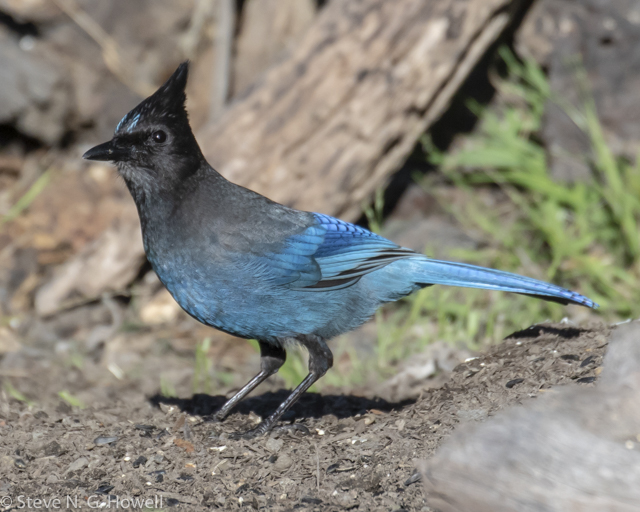Steve Howell continues his Big Foot Big Year into October and November
Steve Howell continues the saga of his COVID-enforced Bigfoot Year in Bolinas, California, with a summary of the record-breaking (oops, giveaway...) late fall months, October and November. Whether it was daily birding or simply that October was above average, I found a steady trickle of new species, including predictable Broad-winged Hawks in the first few days, this adult with a full crop,
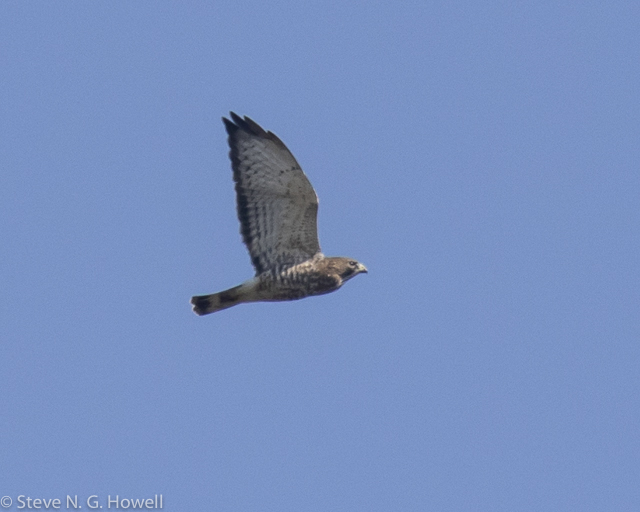
And an unpredictable Acorn Woodpecker (not annual in town, but breeds nearby), this immature male.
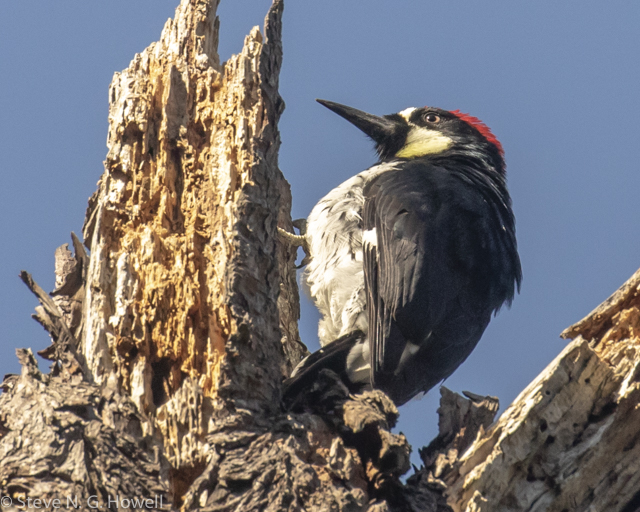
Vagrants included a couple of Tennessee Warblers, always a treat in bright fall plumage.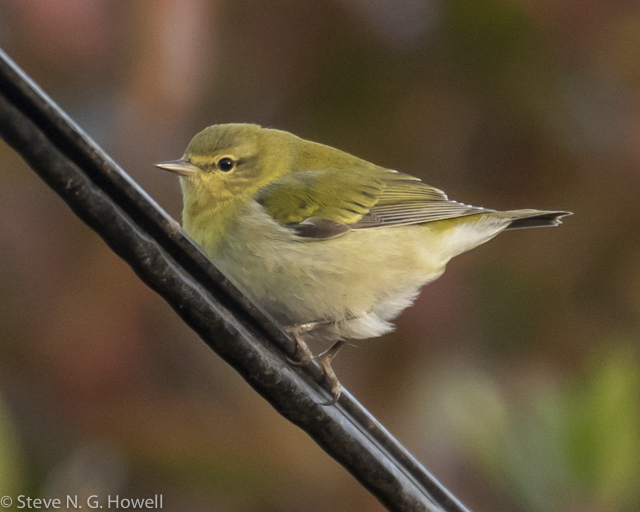
Plus the third Gray Catbird for my yard in 5 years, remarkably on the same date as the first bird (same bird?) back in 2016!
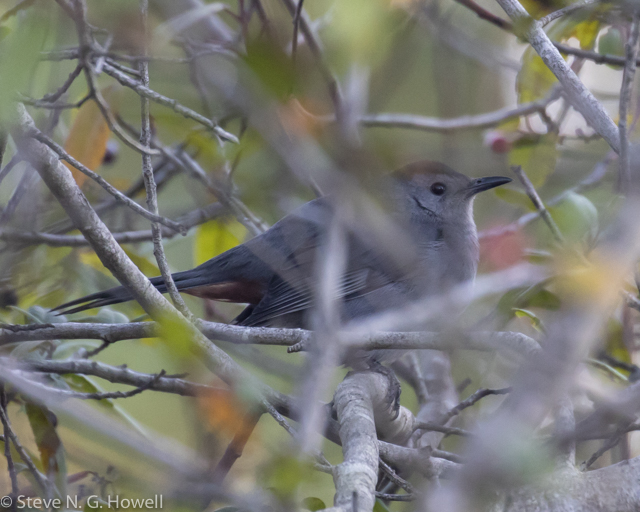
Flocks of Cackling Geese headed south in mid-month.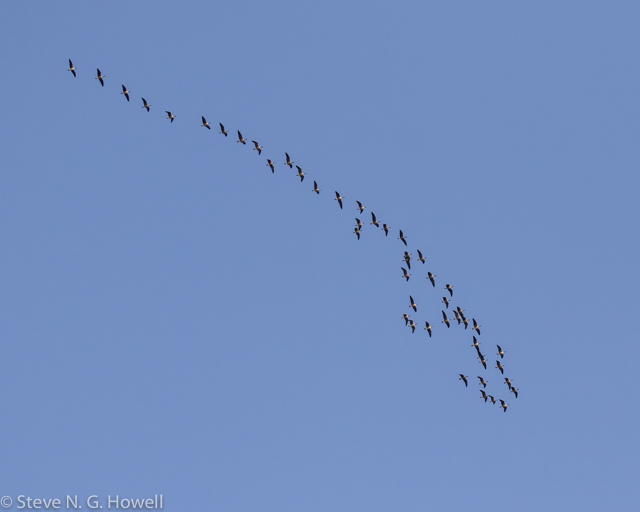
Other notables included another (!) Painted Bunting, even drabber than the September bird—what color exactly is that?
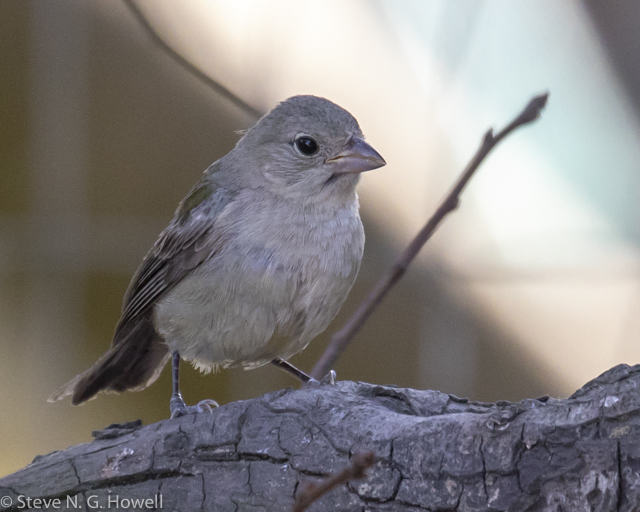
A distant fly-over White-faced Ibis (I’ll assume it wasn’t a Glossy!) was tie-maker for the 2018 total of 218 species, and the tie-breaker was this unexpected young female Vermilion Flycatcher bathed in sunset light at the sewage ponds, very much a county rarity! Gone the next day, sadly.
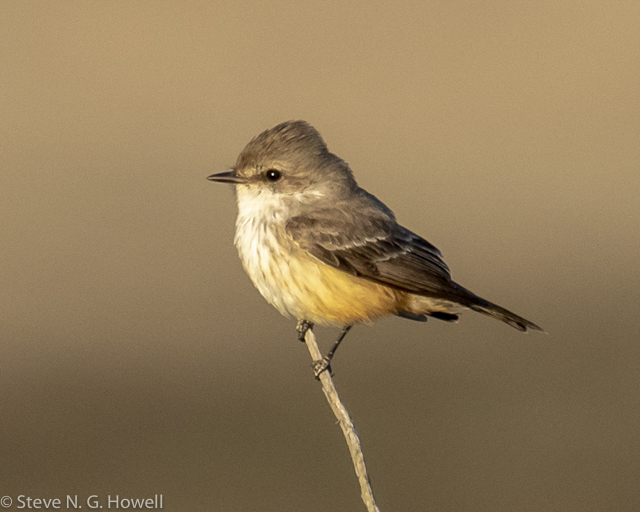
October 28th produced Horned Lark and Cassin’s Finch from my yard (both local rarities), plus this loudly calling (thanks, or I’d never have seen it!) Swamp Sparrow a few blocks away, making 222 for the year—the old record well and truly shattered.
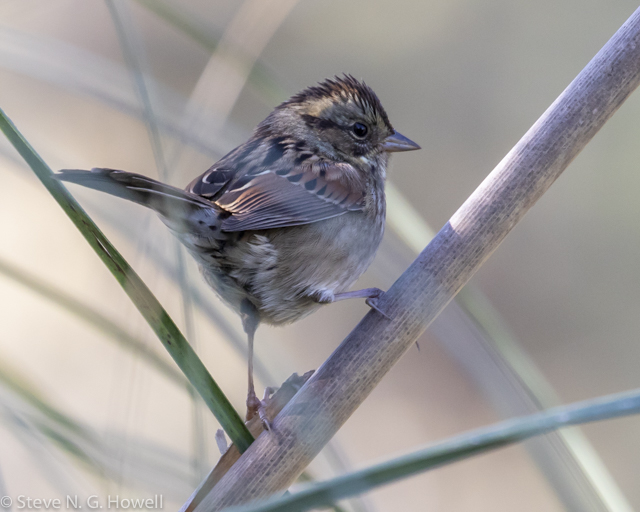
A few waterbirds in late month rounded out October at 225 species, and new birds inevitably dropped off in early November, although Varied Thrush finally (!) appeared, calling from a distant tree top one early morning.
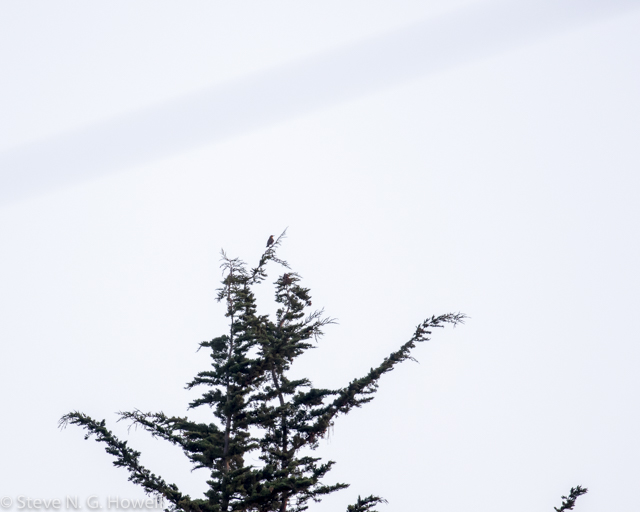
For those who say, “Oh it was too far away to get a (documentary) photo,” that’s rarely true—if you can see and ID it with your binoculars, then the camera usually does a better job—here’s the same Varied Thrush image cropped, not a cover photo, but certainly diagnostic. Try it some time.
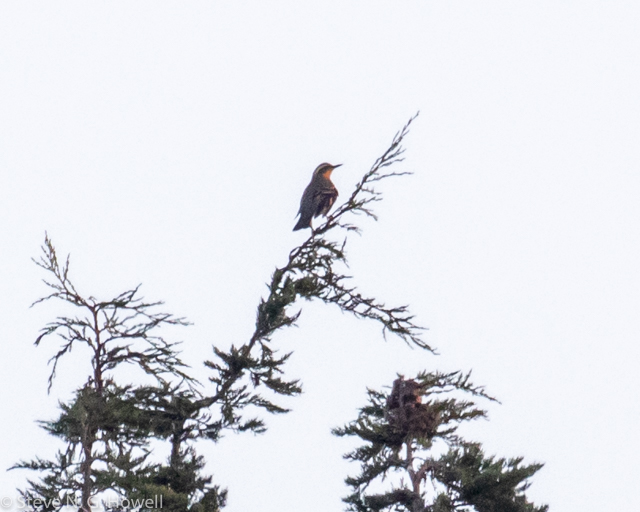
The “local” Black Vulture (a mega-rarity in California, but it’s been wandering the state for years) made an appearance one afternoon, number 227, and then a couple of Marbled Murrelets plus this vagrant Eastern Phoebe (here posing with a local Black Phoebe—look at the different wing and tail lengths) all on November 21st suddenly made 230 species go from unlikely to quite possible. What a difference a day makes!
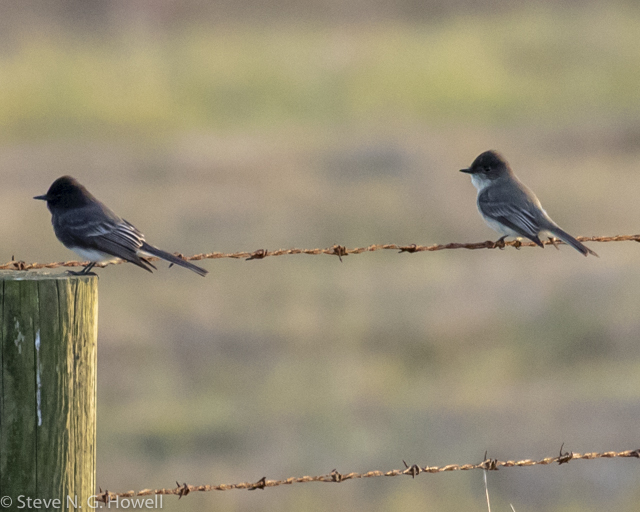
I spent the rest of the month appreciating the local common birds, such as sparrows and this stunning Steller’s Jay (imagine this as a rare vagrant, it would blow your socks off!), and then literally out of the blue a fly-over Evening Grosbeak on November 28th brought my 2020 Bigfoot Year total to 230 species. Hmm, could anything new appear in December, and if so, what? I am now basically out of expected and evenly vaguely possible species, but as we know, who knows with birding… Stay tuned for the final episode, coming soon.
